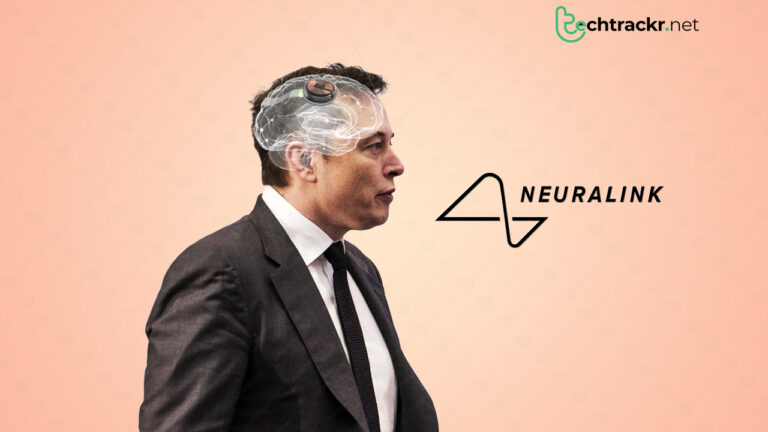
Elon Musk’s brain implant company, Neuralink, just got the green light from an independent review board to start enlisting folks for its inaugural human test run. They’re on the hunt for individuals dealing with paralysis to be part of a six-year study, trying out their cutting-edge device.
Neuralink is just one of the companies in the race to create a brain-computer interface (BCI) capable of gathering and deciphering brain signals. However, the extravagant marketing by its billionaire CEO, which includes grandiose claims about building a do-it-all brain-computer to match AI, has left neuroscientists and other experts skeptical and worried about ethical issues.
What is Neuralink?
Neuralink, a brainy tech company started up by Elon Musk in 2016, is cooking up an implantable brain-computer interface that can turn your thoughts into real-life actions. They’re on a mission to make it possible for folks with paraplegia to get their groove back and even bring sight to those who’ve never had it.
They’ve got a nifty name for the implant itself – they call it “the Link.” It’s a brain chip about the size of a coin, and it gets nestled under your skull. This little guy links up with neural threads that spread out into different areas of your brain responsible for controlling movement.
Each of these threads packs a whopping 1,024 electrodes, which are like super-sensitive sensors that can pick up and send electrical signals. These electrodes are so thin and flexible that you can’t just pop them in with your hands – that’s why Neuralink went ahead and created a neurosurgical robot to get the job done, and they’re even aiming to make it fully automated.
Also read: Can AI really help us address climate change?
Neuralink has been under scrutiny
Last year, the Food and Drug Administration (FDA) put the brakes on Neuralink’s bid to speed up human trials. However, the FDA gave Neuralink the green light for an investigational device exemption (IDE), permitting the use of their device in clinical studies. The FDA hasn’t spilled the beans on how the issues they initially had were sorted out.
Neuralink is on the hunt for folks dealing with quadriplegia from spinal cord injuries or ALS. They want to recruit participants for a study where they’ll implant a brain-computer interface (BCI) right into the brain’s movement control area, using their special robot. The aim? To empower these individuals to steer a computer cursor or type on a keyboard using only their thoughts. The study’s main focus is to assess whether this tech is both safe and functional, as mentioned in their statement.
The company made this announcement a few months after they got the green light for a trial. However, their past experiments on animals are facing some serious criticism. There have been reports suggesting that these trials caused unnecessary suffering. Former employees have even described the tests as “sloppy work,” with one instance where they implanted the device in the wrong spot in pigs, which sadly led to their euthanasia.
These accusations sparked a bunch of investigations. The Department of Agriculture started looking into possible animal abuse, while the Department of Transportation got involved due to concerns about mishandling biohazardous materials as they crossed state lines.
Neuralink has already started recruiting patients
Neuralink just dropped the news in a blog post that they’re gearing up to start enlisting patients for their very first human clinical trial. This study, dubbed the PRIME Study, is now officially on the hunt for patients after getting the thumbs-up from an independent review board and a hospital site. It’s a significant move forward for Neuralink, especially since they got the green light from the Food and Drug Administration back in May for their first-ever human clinical study.
Folks taking part in the trial will need to go through some pretty intense brain surgery. Neuralink is developing a brain implant with the goal of assisting folks dealing with severe paralysis in controlling external devices just by using their brain signals. This could mean that people with serious degenerative conditions like ALS might one day be able to reconnect with their loved ones by moving cursors and typing using nothing but their thoughts.
Also read: Can AI help you break free from virtual meeting overload
Neuralink isn’t the first to make BCI
Neuralink isn’t breaking new ground as the sole player in the brain-interface game. Researchers worldwide have been tinkering with implants and gadgets for ages to tackle issues like paralysis and depression. People are already rocking neuroprosthetics like cochlear implants for hearing. However, Elon Musk’s grand vision for the Neuralink device, with all its fancy capabilities, has raised some eyebrows among experts.
Neuralink jumped into the scene back in 2016, and they’ve come up with a brain-computer interface (BCI) they call the Link. It’s basically a computer chip loaded up with electrodes that can be stitched onto the brain’s surface, hooking it up to external gadgets. They’ve also got a nifty robot to help with implanting this chip.
The design seems to be rocking a brand-new type of electrode, according to John Donoghue, a brainiac at Brown University who headed up the gang that cooked up the brain-computer interface known as ‘BrainGate’ to give folks with paralysis their movement mojo back.
Musk has been throwing out some big ideas for Neuralink’s gadget. He’s talked about using it to tackle issues like blindness, paralysis, and depression. But he’s also set his sights on a grander goal – building a device for the everyday person that could hook their brain directly into supercomputers and keep us humans in the same league as artificial intelligence.
Should we be worried about Neuralink?
Researchers in the brain-machine interface game are still sweating over the potential risks this tech brings to the table. If there’s no rock-solid security in place, there’s a chance that sneaky hackers could worm their way into those implanted chips and make them go haywire or do something they’re not supposed to. And that could spell disaster for the person with the chip – it could even be a matter of life and death.
There’s this nagging concern that super-smart artificial intelligence, operating via a brain-machine setup, might just get too powerful and start bossing around the human brain. That AI could basically become the boss, and before you know it, we humans might turn into a bunch of mind-controlled drones. Elon Musk himself has gone on record, saying that artificial intelligence is a massive threat that could potentially wipe us out. He’s basically saying that, at some point, we’ll have to team up with AI, so we can get rid of the big, scary “existential threat” that super-advanced AI might bring our way.
“My assessment about why AI is overlooked by very smart people is that very smart people do not think a computer can ever be as smart as they are. And this is hubris and obviously false.”
Musk is kind of famous for likening AI research and development to “bringing out the demon.” But what’s the real deal with this statement? Well, some folks see it as a way to spook the public and, by doing that, push governments to slap some serious rules on AI development.
The real tough part when it comes to any technology that could go haywire is making sure we put in the hard work and attention to create safety measures. We’ve pulled this off for a bunch of groundbreaking technologies, like nuclear energy and tinkering with genes.
